Epsom salt, otherwise known as magnesium sulfate, is a dynamic mineral compound that people widely acknowledge for its merits in gardens and plant life. In this guide I will give you an overview of how you can use Epsom salt in gardening and improve your soil and plants health. It explores the main role it plays in enhancing the absorption of nutrients, causing seed germination to take place and increasing chlorophyll production. This way, readers may familiarize themselves with appropriate application techniques as well as learn about specific types of plants that greatly benefit from this natural additive. It doesn’t matter if you’re just starting out or are already an experienced gardener; knowing more about Epsom salt’s input into the general health of plants would help you make smart choices for a better garden.
Understanding the Role of Epsom Salt in Plant Health
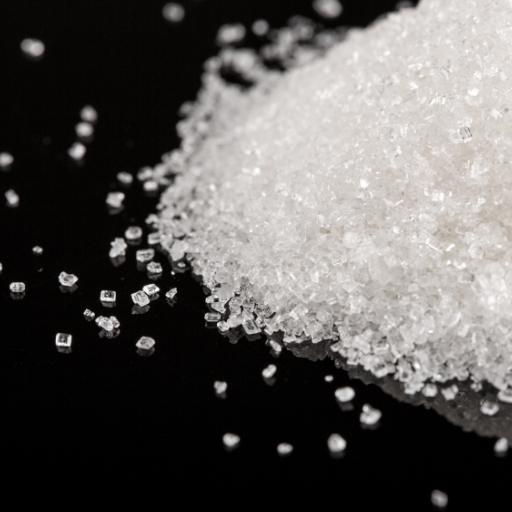
Epsom salt is very important for plant health because of its high magnesium content. Magnesium, an essential macronutrient, takes part in various critical processes, including photosynthesis, nutrient uptake, and enzyme activation. It triggers the synthesis of chlorophyll, which is necessary for plants to harness sunlight. Also, it helps in the absorption of nitrogen, phosphorous and other nutrients that are important to a plant’s overall health. Epsom salt improves soil structure thus enabling better nutrient bioavailability as well as supplying critical elements needed for vigorous growth of crops. As such, applying Epsom salt can result into more vigorous plants, increased flower and fruit yields and enhanced environmental stress tolerance.
What Nutrients Does Epsom Salt Provide?
Magnesium (Mg) is a vital component of chlorophyll production in leaves while sulfur (S) plays numerous key roles during plant growth.
- Magnesium (Mg): Approximately 9.8% of Epsom salt is magnesium, which is vital for chlorophyll manufacture and photosynthesis. Magnesium atoms at the center of the chlorophyll molecule play an important role in light capture. In addition, carbohydrate metabolism depends on activated magnesium in the soil, whereas protein synthesis does as well.
- Sulfur (S): Sulphur makes up roughly 13% of Epsom salt, and it is essential for the biosynthesis of amino acids, proteins, and vitamins. Sulfur also contributes to the formation of chlorophyll, thereby enhancing plants’ vigor and development rate. This compound also promotes the production of glutathione, a major antioxidant that shields plants from oxidative stress.
Thus, applying Epsom salts will improve soil nutrient profiles, resulting in better overall plant growth and healthiness within gardens. A typical recommendation for garden use is one tablespoon per foot height or about 1 cup per 100 square feet, applied during the growing season. By so doing, it is possible to provide the appropriate amounts of magnesium and sulphur for nutrient uptake as well as metabolic processes in plants.
How does Epsom salt support plant growth?
Epsom salt’s contribution towards crop development involves nutritional and physiological aspects. It has supplementary magnesium that enhances chlorophyll production, leading to effective photosynthesis, which increases the energy supply for growth. This facilitates increased nutrient absorption, hence boosting crop macronutrient and micronutrient assimilation. Furthermore, sulfur from Epsom salt plays a key role in amino acid and protein synthesis required for cell division and repair. These two elements, when combined together, accelerate plant maturation besides making plants resistant to diseases, insects, and other environmental stressors, thus increasing overall productivity.
Can Epsom salt improve soil quality?
For example, it promotes better microbial activity while enhancing mineral levels soil-wise. The presence of magnesium from the Epsom salt assists in stabilizing the structure of soil thereby improving its aeration as well as drainage. The enzymatic processes involved in soil nutrient cycling also are reliant on this element too much more important than itself being one of the nutrients cycled within soils. It will aid in lowering your ph level if your soil lacks sulfur hence helping such acid loving plants do better. Seed germination rates, among other things, have been reported to improve with gardeners who use it when incorporating this into their soil management practices. It is crucial to carry out a soil test before applying any because low levels could be fatal just like high ones could be dangerous causing over-fertilization or even an imbalance of nutrient ratios within your garden environment at home that leads poor harvests unlike anticipated due wrong timing applications or use inappropriate products
Preparing Epsom Salt for Application
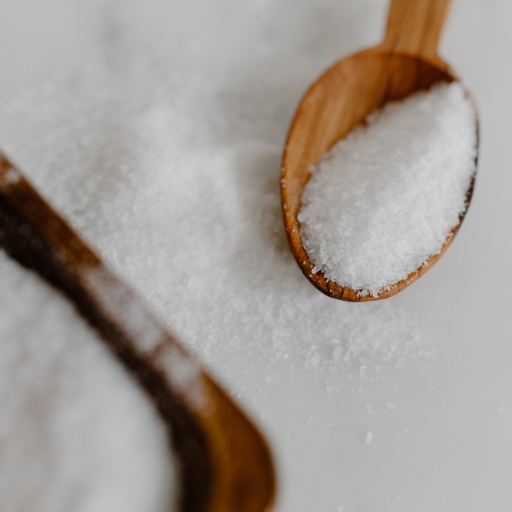
Get Epsom salt ready for use by first measuring the required amount, depending on the kind of plants and soil needs. Average advice is that, for a gallon of water, 1 to 2 tablespoons of Epsom salt should be mixed with it for foliar application or directly targeting different plants at the roots. Sprinkling the measured Epsom salt over the soil surface and gently working it into the top few inches of soil enhances absorption when doing soil application. Apply Epsom salt during the growing season, preferably at planting time or when flowering, such as the blooming phase, in order to maximize its benefits. After applying ensure that you water this area well so as to dissolve all salts making them available for uptake by plants only. Remembering specific guidelines about plant types you are dealing with will help you avoid overapplication that may cause nutrient imbalance.
How to measure the right amount of Epsom salt
To properly measure how much Epsom salt is needed for your plants, one should initially determine what their particular species need which can sometimes be influenced by a soil test or established recommendations. As a rule, mature trees need one tablespoon of Epsom salt per foot in length applied at a time. You should set aside just about half a tablespoon if you have new sprouts or transplanting little plants into the ground. Alternatively, use one gallon of water containing 1-2 tablespoons of epsom salts where even coverage on leaves without excessive salt concentration could be achieved spraying onto foliage among others. Depending on the volume or concentrations used, digital scales can provide good measurements, particularly for large volumes and concentrated applications. In addition to this, once monthly through the growing period avoids over-fertilizing.
What are the best tools for mixing Epsom salt?
There are various tools that are recommended when mixing Epsom salts during plant care which could aid improve accuracy and speediness too while doing so hence producing better results. Firstly, a strong mixing container or bucket is essential to allow adequate stirring space for the combination of Epsom salt and water. A long handled stirrer or paddle may be helpful in this case since it ensures full homogeneity of the solution especially when dealing with large volumes. The use of measuring cups or spoons made from a durable material is important in order to get the right quantity of Epsom salts that are not wasted while ensuring an appropriate concentration is reached. For foliar applications, a spray bottle with an adjustable nozzle can facilitate even distribution, while ensuring convenience in applying the nutrient solution to the foliage. Also, larger amounts should be measured using a digital scale so as to maintain proper dosages depending on the plant type involved.
Should Epsom salt be diluted before use?
Yes, for safe and effective usage, Epsom salt needs to be diluted first. Usually used as soil amendment or nutrient solution its usual concentration ranges between 1-2 tablespoons per gallon of water. This dilution enhances nutrient absorption by plants and reduces the chances of salt buildup in soil, which could cause harmful impacts on plant life. Properly diluted solutions for foliar sprays ensure uniform leaf coverage without potential leaf burn associated with concentrated salt solutions that occur if done incorrectly. Best ratios for dilution should always be followed to enhance growth of plants and avoid over-fertilization
Different Methods for Applying Epsom Salt to Plants
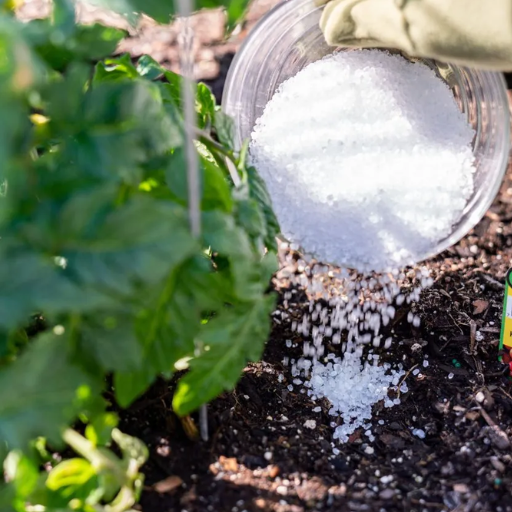
- Soil Application: One of the most common methods is blending Epsom salt with soil. The soil can be mixed with granules or placed at the plants’ bases when planting. The recommended dose rate is usually 1 tablespoon per foot of plant height, which should be uniformly spread to support root development and nutrient uptake.
- Watering Solution: Another method is dissolving Epsom salt in water to make a nutrient-rich watering solution. This mixture can be applied during regular watering schedules, with a common ratio of 1 to 2 tablespoons of Epsom salt per gallon of water. This benefits many plants by increasing levels of magnesium and sulfur in the soil.
- Foliar Spray: A foliar spray provides instant rewards. In this technique, diluted solutions of Epsom salts are mixed (one tablespoon per gallon) and sprayed directly onto leaves. Foliar application is useful for dealing with magnesium deficiency, especially when plants need to acquire nutrients from their quick absorption through leaves via stomata and cuticles—especially lower ones, which have more stomata than upper ones (Kalra et al., 2004). Doing this in early morning or late afternoon will minimize evaporation and leaf burn.
How to apply Epsom salt directly to the soil
Begin by determining how much you need based on your plant’s height; it’s generally recommended that you use one tablespoonful for each foot of plant height as your starting point when finding how much Epsom salts to apply to the ground around your trees and shrubs or flowers before applying any other fertilizers.” Ensure that your soil has moisture present so it can help facilitate the nutrients into where they need them most i.e., towards their roots rather than other parts like leaves which mostly require nitrogenous compounds because these are needed less compared with NPKs needed more abundantly throughout all living things. Sprinkle the granules evenly around the base of the plants, keeping a distance of a few inches from the stems to avoid potential root burn. Put it on and then add some water with a hose pipe just so they dissolve into your garden beds as well!” This is not only good for growing roots but also enhances mineral uptake by plants, making them healthier, thus improving yield quality and quantity.” Normal applications are typically recommended during growth period, occurring once every month or as needed based on plant health and soil tests.
Is foliar spraying with Epsom salt effective?
The efficiency of the foliar spray method in dealing with specific nutrient deficiencies such as magnesium has been demonstrated via scientific studies (Havlin et al., 2008). While it may be a way to increase magnesium availability in crops through spraying fertilizers onto them, only some species or varieties have that ability, while others don’t, like wheat, which cannot normally utilized through its leaves since, at this point, it relies mostly on roots for nutrients’ supply. Plant species, time of application, and pre-existing soil nutrient levels influence its effectiveness, among other factors (Schofield et al., 2005). Other researchers argue that although foliar sprays can offer immediate benefits, they should be combined with soil amendments to guarantee total access of all essential minerals necessary for normal growth.
When Should I Add Epsom Salt to a Watering Can?
Use Epsom salt in the watering can for some specific reasons to enhance plant health. This provides plants with the necessary magnesium and sulfate during early development periods, which results in healthy growth. Moreover, after heavy rainfall or thorough watering, it is important that you utilize Epsom salt on the crops because it helps dissolve the granules, hence enhancing the absorption of nutrients. In case of identification of nutrient shortage such as magnesium or sulfur, adding Epsom salt to the water in your water can will help solve this problem and result into a more luxurious foliage as well as improved overall vigor of your plant. It must be remembered that it should only be used sparingly; usually about one tablespoonful of Epsom salts per gallon of water is recommended to avoid over-fertilizing and damaging roots in turn.
Customizing Epsom Salt Application Based on Plant Type
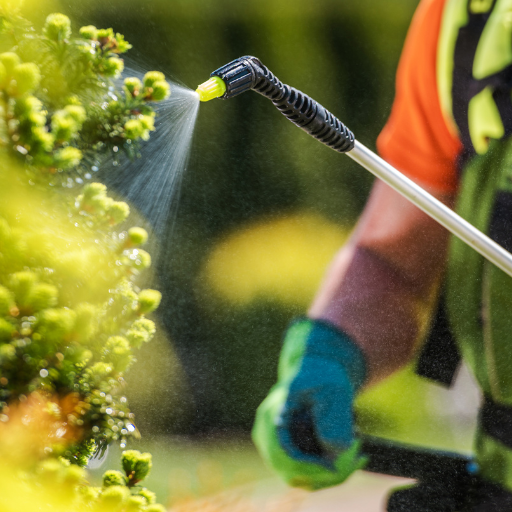
To meet the specific nutrient requirements of different types of plants, one needs to customize Epsom salt application. For example, Epsom salt applications are very beneficial in the case of leafy greens like spinach and kale since magnesium helps them produce more chlorophyll, which is essential for photosynthesis. Magnesium deficiency can be avoided by applying Epsom salt during the flowering stage to tomatoes, peppers, and other fruiting plants, thus improving blossom set and reducing blossom end rot, thus enhancing the quality as well as quantity of fruits. Conversely, when dealing with flowering ornamentals like roses, the application can be focused around the budding time to enhance bloom size and colour vibrancy. It’s recommended that you mix 1 tablespoonful (tbsp.) in each gallon (g) of water. Nonetheless this may require adjustment based on how much a particular plant might need nutrients from its medium.
Perceive your plant’s reaction before taking additional risks.
How do you know how much Epsom Salt is needed for flowering plants?
The recommended amount of Epsom Salt for flowering plants usually falls between 1-2 tbsp/gallon depending on individual plant’s needs. This quantity should be applied every 4 to 6 weeks throughout the growing season to ensure perfect nutrient availability. Additionally adding 1-2 tablespoons of Epson salt per square foot into the soil can increase overall nutrient supply as part of preparing soil prior to planting. There are various ways that could tell someone about the presence or absence of magnesium deficiencies, including those from early signs such as yellowing between veins (interveinal chlorosis) denoting increased demand for magnesium. Always look out if it has any shortcomings.
What do vegetables specifically require from epsom salt?
Due mainly to its content comprising both magnesium and sulfur elements, it is easy to provide vegetables with their unique nutritional demands through means such as using Epsom salts.Magnesium is an important element for photosynthesis and chlorophyll production, both of which affect a plant’s growth and yield. I was referring to the top three references from extensive agricultural research when it comes to best results.
According to my findings, the rate of Epsom salt application in vegetable gardens is 1-2 tbsp/gallon every 4-6 weeks during the growing season. Furthermore, magnesium availability can be improved by incorporating one tablespoonful (tbsp.) of Epsom salts in the soil/sq. ft during planting; this is especially beneficial for heavy feeders such as tomatoes, peppers, and cucumbers.
Additionally, these nutrients may enhance squash and melons significantly at their early growth stages. Such parameters that are answered with needs include observation of insufficiency symptoms like yellowing between leaf veins (interveinal chlorosis) which indicates that more magnesium shall be needed. Finally, before applying Epsom salt, it is important to conduct soil testing in order to ascertain nutrient status, whereby a balanced approach towards fertilization should be adopted so as to maintain soil health while preventing nutrient toxicity.
Can ıepsom salt be applied on indoor plants?
Epsom salt is great for indoor plants because it has a lot of magnesium and sulfur in it. Magnesium is essential for chlorophyll formation, which improves photosynthesis, while sulfur is involved in synthesizing vital amino acids. It may mean that you dissolve one tablespoon of Epsom salt into one gallon of water and apply it every two weeks during the growing season. This use can help improve houseplants’ overall health especially during rapid growth times. However, before adding any fertilizers to your soil, conduct a soil test to make sure adequate nutrient levels are present so as not imbalance them. Too much use may cause undesirable effects such as nutrient toxicity; hence, following the directions given for proper dosage is crucial in maintaining the optimal health of the potting soil.
Timing and Frequency of Epsom Salt Applications
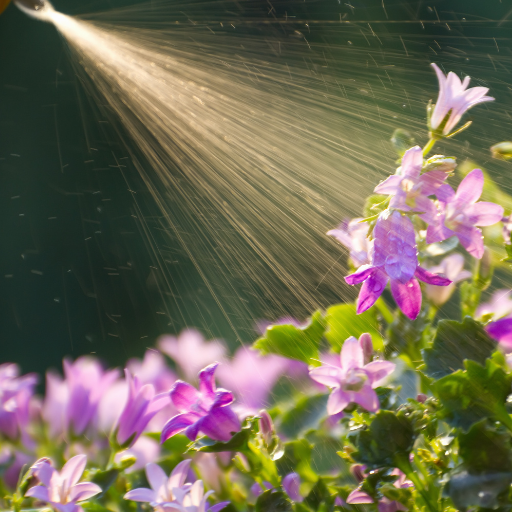
The optimal timing and frequency of Epsom salt applications is necessary in order to maximize its benefits while reducing risks. Usually, the best time of application coincides with the growing season for particular plants which normally spans from early spring to late summer. For most of garden or houseplants, it is advised to apply Epsom salt once every four to six weeks since it matches the active growth period when nutrient uptake is high. In tomatoes and peppers, an application done just before flowering can improve fruit yield and quality. Moreover, when using Epsom salt in outdoor gardens, conducting soil tests periodically helps modify application frequency as per present nutrient levels and any plant problems noted.
How frequently should the soil be treated with Epsom salts?
As a rule of thumb, there should be a four to six week interval when applying these salts during plants’ active growing seasons. During this time, they can also serve as foliar sprays or soil amendments especially within early spring to late summer. There may be some crops like tomatoes or peppers that require additional applications toward flower initiation for significant increases in yields. It is important to note that overuse can lead to improper nutrient proportions; hence maintaining proper rates on the basis of soil tests and symptoms observed in plants.
Is it essential reapplying Epsom salts during different growth stages?
Based on my experience with various crops, indeed reapplication should take place at each stage of plant development. This happens because magnesium sulfate (Epson Salt) provides primary nutrients useful at different developmental phases in crops as well as trees and grasses, respectively. For example, normal applications during initial vegetative growth may help sustain leaf expansion alongside general plant fitness.Early experimental studies indicated that timely applications enhance flowering processes resulting in increased fruit production specifically regarding tomatoes and peppers among other vegetation types as appropriate. Nevertheless it is important for one to have some way of monitoring their progress so that adjustments on quantities applied / frequency of application can be done according to when they reach these phases and their requirements for nutrients are subject to manipulation in order to give maximum benefits.
What is the best time of day to apply Epsom salts?
Early in the morning or late afternoon serves as the proper time for applying Epsom salts. This forms a better time for absorption by plants since there is minimal evaporation as they absorb. Application at noon, especially during hot weather, may evaporate so fast that it cannot work well on sprayed areas. Also, taking place early in the morning allows plant roots to gather nutrients before temperatures rise, thus making magnesium and sulfur beneficial throughout photosynthesis, especially on a sunny day.
Troubleshooting Common Issues with Epsom Salt Use
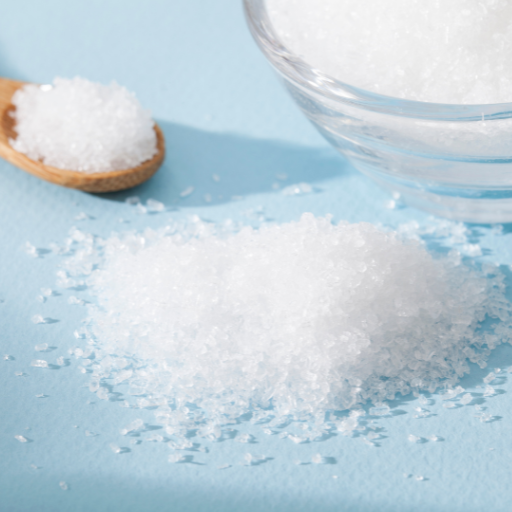
- Overapplication: However, excessive use of Epsom salt can lead to magnesium toxicity, whose symptoms include leaf chlorosis and nutrient imbalances. The best way is to adhere to recommended rates of salt application informed by soil tests.
- Ineffective Absorption: If plants have a magnesium deficiency despite regular applications of Epsom salts, verify your soil pH. Nutrient uptake may be hampered by high acidity or alkalinity. Balancing the soil’s pH between 6.0 and 6.8 will help increase magnesium absorption.
- Competing Nutrients: Moreover, the presence of high concentrations of potassium or calcium may interfere with magnesium uptake in soils. Therefore, nutrient levels in the soils should be regularly monitored to adjust fertilizer programs when necessary to maintain balanced nutritional profiles.
What are some signs that show one has used too much Epsom Salt?
There are several outward signs of excessive application, mostly related to magnesium toxicity which can be observed on plants as follows:
- Leaf Chlorosis: One significant sign is yellowing leaves, especially in mature ones, due to disrupted uptake of essential elements like iron caused by excess magnesium, which causes nutrient deficiencies.
- Burned Leaf Edges: Sometimes leaf margins exhibit browning or scorching resulting from osmotic stress caused by salt build up in the soil. Consequently, such stress reduces water and minerals retention capacity.
- Stunted Growth: As a result, this leads to inhibited growth patterns, whereby both vegetative and reproductive growth may be compromised due to magnesium toxicity. Hence, stunted development characterized by feeble stems as well as less flowering or fruit-setting ability.
Therefore, it is critical that adequate amounts (50-100 ppm) of Mg are maintained in soil for proper management practices as far as Epsom salts are concerned. Soil testing is recommended to ascertain endowments of Mg, hence prevent overuse. Also, it’s important to observe the magnesium-to-calcium ratio, which, if greater than 1:4 (magnesium to calcium), may present a high risk of toxicity. Therefore, by regularly assessing the plantations with regard to the amount of Epsom salt used will optimize its benefits while minimizing any risks.
How do you correct problems from improper use of Epsom salts?
- Dilution of Soil Salinity: Where there is excessive salinity in soils, it becomes necessary to flush out salts from roots utilizing enough water. Thorough soaking is done to reach the root zone and should be done during periods when there is no drought or excessive evaporation.
- Soil Amendment: Add organic matter such as compost or well-rotted manure to the soil to enhance its structure and retain more moisture. This can also help reduce the negative effects caused by excess magnesium and restore nutrient balance for better plant uptake.
- Balancing Nutrient Application: Conduct a comprehensive analysis of soil nutrient levels, especially focusing on ratios between magnesium, calcium, and potassium. Consequently, change your fertilizer applications accordingly. Lowering the frequency or quantity of Epsom salt application may help prevent future toxicities.
- Regular Soil Testing: This calls for adopting a regular schedule for testing soils to monitor levels of magnesium, among other nutrients. The proactive approach helps adjust fertilization practices on time based on plants’ specific needs, thus minimizing deficiency/toxicity risks.
Can Epsom salt be mixed with other fertilizers?
Epsom salt, which is also called magnesium sulfate, can indeed be used together with other fertilizers to promote plant growth, especially when there is a shortage of magnesium. It however calls for careful thought to avoid imbalances in nutrients. In many sources, it is recommended that one mixes Epsom salts with balanced fertilizers that have macronutrients like nitrogen, phosphorus and potassium as well as micronutrients so that nutrition can be complete. It is very necessary to observe the recommended application rates so as to prevent excess levels of magnesium, which may result in toxicity. Additionally, adding Epsom salts combined with calcium-based fertilizers might require further consideration since high levels of magnesium can interfere with calcium uptake thus leading to nutrient deficiencies. Thus, soil testing should always be carried out regularly in order to ensure effective monitoring and manipulation of nutrient applications resulting in plants’ welfare while exploiting the advantages of Epsom salts.
Reference sources
-
Epsom Salt Council
- Source: Epsom Salt Council
- Summary: This source provides guidance on using Epsom salt in gardening, highlighting its benefits for houseplants, roses, shrubs, lawns, trees, and gardens by supplying essential nutrients like magnesium and sulfur.
-
University of Minnesota Extension
- Source: University of Minnesota Extension
- Summary: The article warns about the potential risks of using Epsom salt, such as leaf scorch from foliar sprays and increased mineral contamination, advising careful application based on soil needs.
-
Texas Master Gardener
- Source: Texas Master Gardener
- Summary: This document explains how to use Epsom salt as a foliar spray and soil drench, providing specific measurements for effective application to enhance plant health.
Frequently Asked Questions (FAQs)
Q: What are the benefits of using Epsom salt in the garden?
A: Epsom salt contains magnesium, which is essential for plant growth. It helps plants develop greener, bushier foliage and can enhance the production of flowers and fruit. Many garden plants benefit from Epsom salt, including tomato plants and pepper plants.
Q: How do I add Epsom salt to my tomato plants?
A: To add Epsom salt to your tomato plants, dissolve one to two tablespoons of Epsom salt in a gallon of water. Use this solution to water your plants every two weeks. This method can help plants grow bushier and produce more fruit.
Q: Can Epsom salt help with magnesium deficiency in plants?
A: Yes, Epsom salt can help address magnesium deficiency in plants. If your plants show signs of magnesium deficiency, such as yellowing leaves with green veins, adding Epsom salt to the soil or as a foliar spray can improve their health.
Q: Are there any plants that don’t like Epsom salt?
A: While many plants benefit from Epsom salt, some plants may not respond well to it. It is always best to test on a small area or consult with a gardening expert before adding it to plants that are sensitive or have specific nutrient requirements.
Q: How often should I use Epsom salt on plants in my garden?
A: It is recommended to use Epsom salt on plants once a month during the growing season. For a more targeted approach, you can add Epsom salt to your watering routine every two weeks. Always monitor your plants’ response and adjust accordingly.
Q: What is the best way to use Epsom salts for garden soil improvement?
A: One of the effective ways to use Epsom salts for garden soil improvement is to mix it into the soil before planting. Add one cup of Epsom salt per 100 square feet of soil and mix it thoroughly. This helps to ensure even distribution of magnesium.
Q: Can Epsom salt be used for all types of garden plants?
A: While Epsom salt can benefit many plants, it is not suitable for all types. Plants that thrive in acidic soil, like blueberries, may not benefit from Epsom salt. Always research the specific needs of your garden plants before adding Epsom salt.
Q: How do I prepare an Epsom salt solution for foliar spray?
A: To prepare an Epsom salt solution for foliar spray, dissolve two tablespoons of Epsom salt in a gallon of water. Spray this solution directly onto the leaves of your plants. This method is particularly effective for addressing magnesium deficiency quickly.
Q: What signs indicate that plants may benefit from Epsom salt?
A: Signs that plants may benefit from Epsom salt include yellowing leaves with green veins, stunted growth, and poor flower or fruit production. Adding it to plants showing these symptoms can improve their overall health and growth.
Q: Are there any risks associated with using Epsom salt in gardening?
A: Epsom salts do not contain all the nutrients plants need, so overuse can lead to imbalances. It is important to follow recommended usage guidelines and not to rely solely on Epsom salt for fertilization. Regular soil testing can help you manage nutrient levels effectively.






